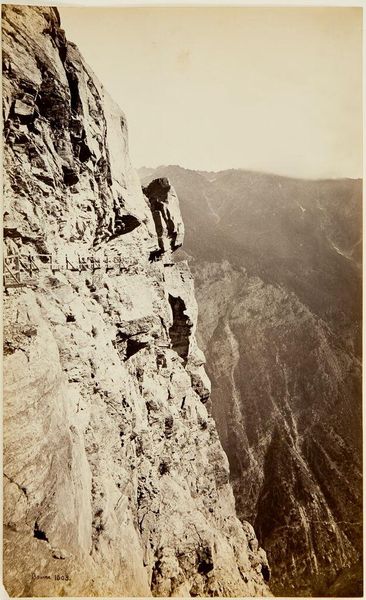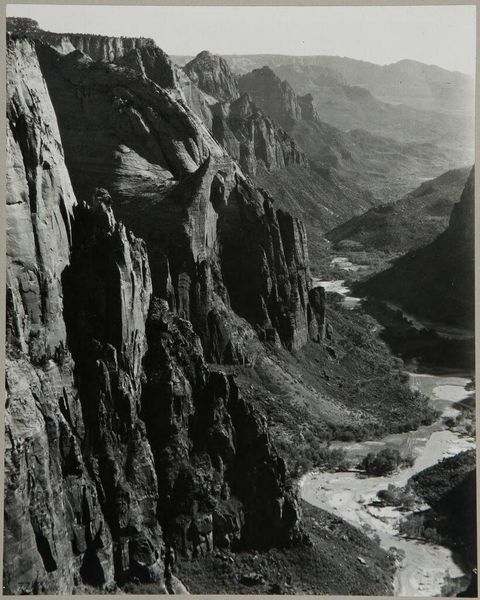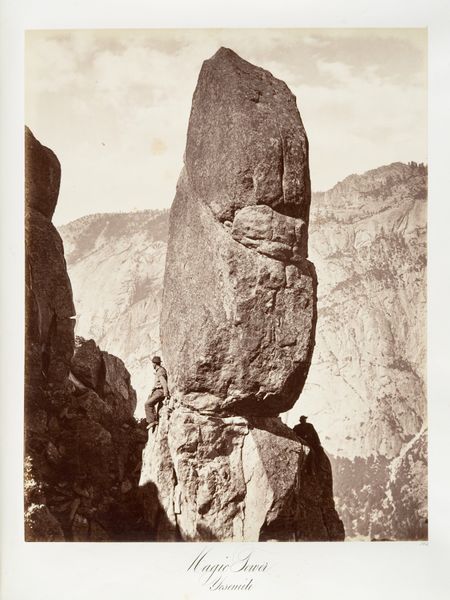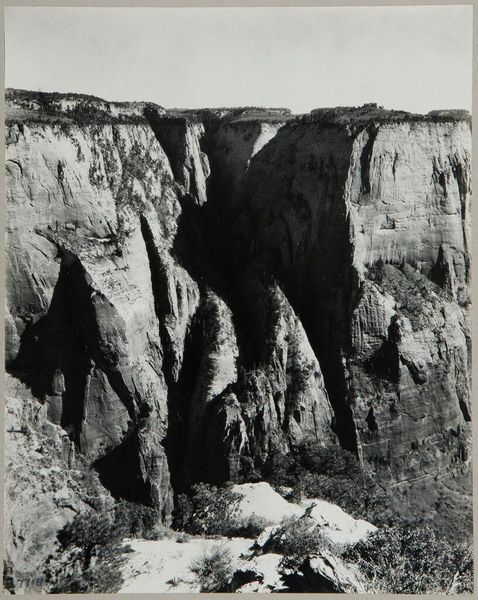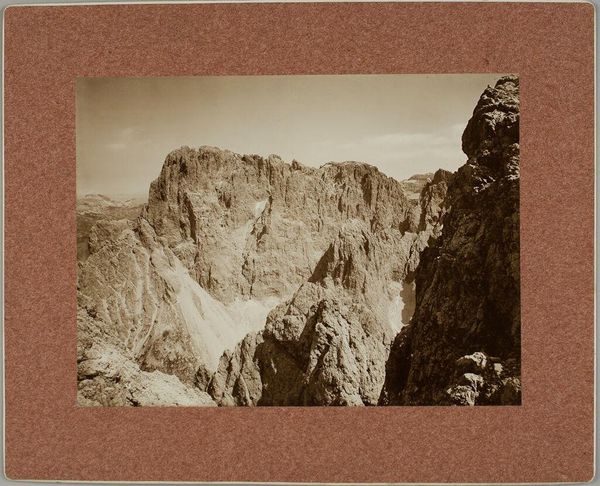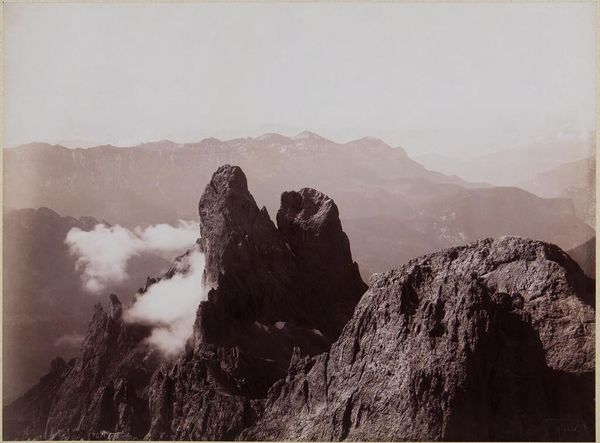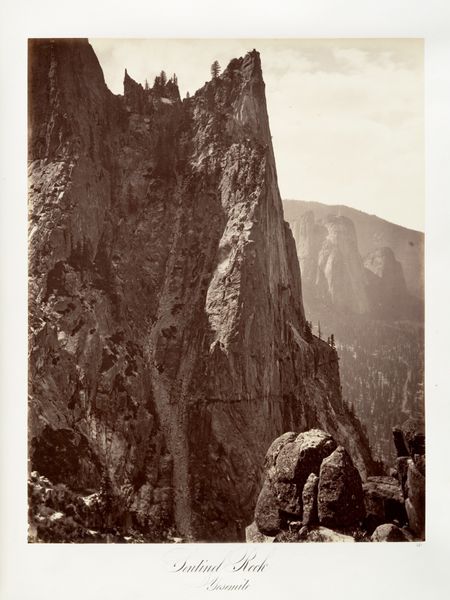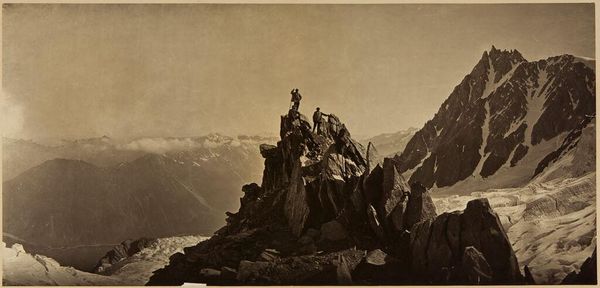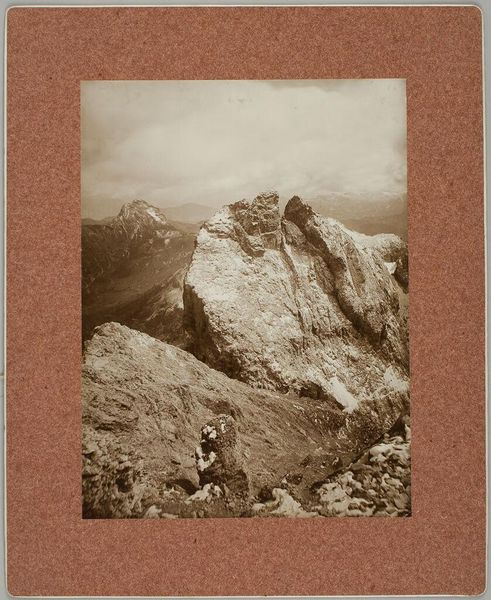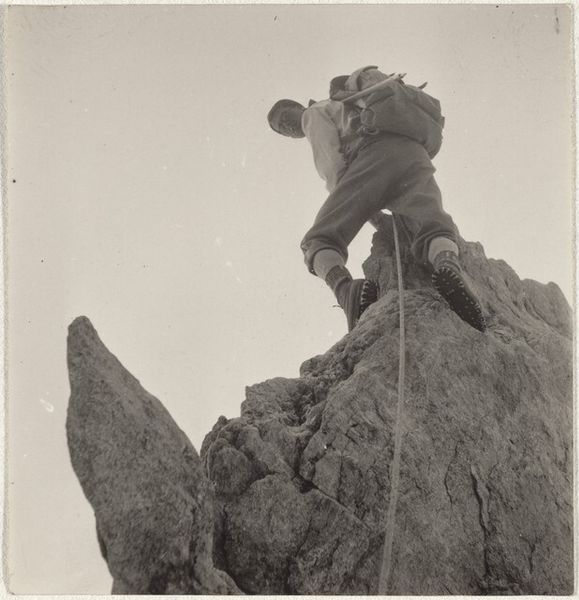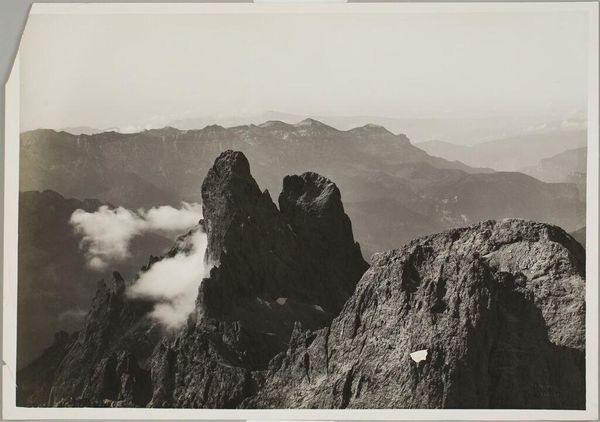
The Sutlej, Chini, Wanga Valley; The New Road Near Rogi; the Cliff, Near View c. 1867
0:00
0:00
Dimensions: image: 31.2 x 19 cm (12 5/16 x 7 1/2 in.) mount: 55.8 x 45.8 cm (21 15/16 x 18 1/16 in.)
Copyright: CC0 1.0
Editor: Here we have "The Sutlej, Chini, Wanga Valley; The New Road Near Rogi; the Cliff, Near View" by Samuel Bourne. This almost looks like a landscape painting, but it's a photograph! I'm struck by the sheer scale of the cliff face and the precarious road carved into it. What do you see in this image? Curator: I see a very deliberate construction of empire. Bourne's photographs weren't just capturing landscapes; they were actively promoting the British presence in India. The very act of documenting these remote regions visually reinforced colonial power. Editor: So, it's not just a pretty picture, but a political statement? Curator: Precisely. The "new road" signifies progress and control, reshaping the landscape for British interests. Think about who commissioned these images and how they were used. They served to legitimize colonial expansion. Editor: That’s fascinating. It’s made me think differently about landscape photography. Curator: Indeed. It’s a reminder that art is rarely neutral; it often reflects and reinforces existing power structures.
Comments
No comments
Be the first to comment and join the conversation on the ultimate creative platform.
